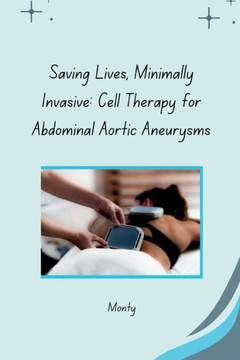
Tredition Gmbh
A Silent Threat : Exploring New Therapies for Abdominal Aortic Aneurysms
Product Code:
9783384280077
ISBN13:
9783384280077
Condition:
New
$22.88

A Silent Threat : Exploring New Therapies for Abdominal Aortic Aneurysms
$22.88
Fibronectin (FN) is a component of the interstitial ECM. It also mediates cell attachment and function [16]. It is a ?bril-forming glycoprotein which is structurally a dimer of two identical proteins of 250 kDa covalently attached via disul?de bonds at their C termini. It is ubiquitously expressed in tissues. Different functional motifs on its structure helps fibronectin to interact with GAGs, collagens, ?brin and integrins facilitating matrix organization and cell-matrix interactions [18]. For example, ?bronectin serves as a template for proper collagen ?brillogenesis by forming a ?bril network engaged by cell surface integrins [16]. Cellular traction force causes FN to be stretched several times over its resting length [18]. As a result of such stretching, cryptic integrin-binding sites within the FN molecule is exposed resulting in pleiotropic changes in cellular behavior [18]. Hence FN acts as an extracellular mechano-regulator in addition to its role in cell migration during development. Studies have also shown the implication of FN in cardiovascular diseases and tumor metastasis
| Author: Mackil |
| Publisher: Tredition Gmbh |
| Publication Date: Jul 05, 2024 |
| Number of Pages: NA pages |
| Language: English |
| Binding: Paperback |
| ISBN-10: 3384280075 |
| ISBN-13: 9783384280077 |





